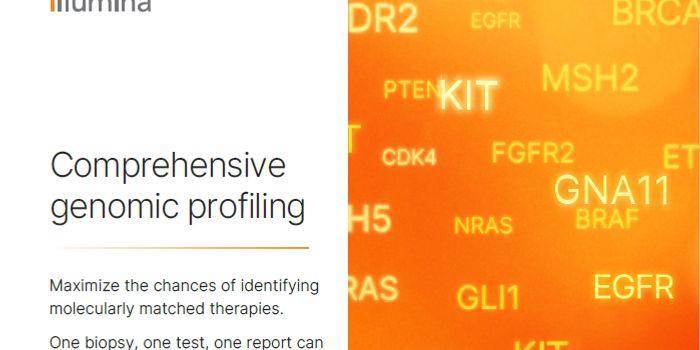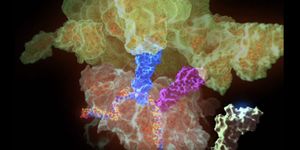DNA Replication Discovery May Lead to New Cancer Treatments
Researchers have learned more about the replication of genetic material during cell division, and their insights may help create new types of cancer therapeutics. The work has been published in Cell Reports.
"If we are visionaries, I would say that we might be at the birth of a whole new set of molecules that could be used in fighting cancer," said Research Leader and Associate Professor Luis Toledo of the Center for Chromosome Stability at the Department of Cellular and Molecular Medicine at the University of Copenhagen. "Basically, if we turn the finding on its head, this novel strategy aims at exploiting an in-built weakness in cancer cells and make them crash while they divide."
During cell division, the DNA in the nucleus of the cell has to be copied so each new daughter cell will receive a complete new genome. When DNA is replicated, the double-stranded helical structure of the molecule must be opened like a zipper (animated in the video). When the helix is unzipped, a bit of single-stranded DNA is briefly exposed as new double strands are created on the separated strands. It has been thought that too much single-stranded DNA is a sign of pathology.
This new research has shown that the unzippers that unwind double-stranded DNA are looser than we assumed, and can create higher levels of single-stranded DNA than we knew. This single-stranded DNA is simply a type of normal stress that the cell is able to deal with, even when it's present at high levels, the scientists have found. To do so, the cell needs a protein that exerts a protective role, called RPA, which covers the single-stranded portions of DNA.
"We have seen that cells can duplicate their genome, even with large amounts of single-stranded DNA. They can divide and go on living healthily because they have a large excess of RPA molecules that acts as a protective umbrella," explained the first author of the study, former University of Copenhagen postdoctoral fellow Amaia Ercilla.
"But there is a flip side of the coin. When we make the cells generate single-strand DNA faster than what they can protect, chromosomes literally shatter in hundreds of pieces, a phenomenon we call replication catastrophe. We always thought that we could use this, for instance, to kill cancer cells," she added.
Normally, it's difficult to remove a cell's supply of RPA, noted Amaia Ercilla and Luis Toledo. In this study, the researchers applied various forms of chemotherapy in an attempt to raise the levels of single-stranded DNA. It took about an hour to deplete the RPA in a cell even when using the most effective compounds, and cause a catastrophic replication failure and subsequent cell death.
The scientists found a better way. They used an inhibitor that disrupted POLA1, a gene that encodes for an enzyme called DNA polymerase alpha, which starts DNA replication during cell division.
"Although no new DNA can be made when we inhibit POLA1, the DNA unzippers keep advancing and generate single-stranded DNA at very high speed," said Toledo. "All cells can be sensitive to POLA1 inhibitors, including cancer cells, and we might speculate that the strategy could be especially useful against very aggressive forms of cancer that proliferate at a high pace."
The researchers now want to identify compounds that interfere with POLA1 and might be useful as cancer treatments.
Sources: Phys.org via University of Copenhagen, Cell Reports








